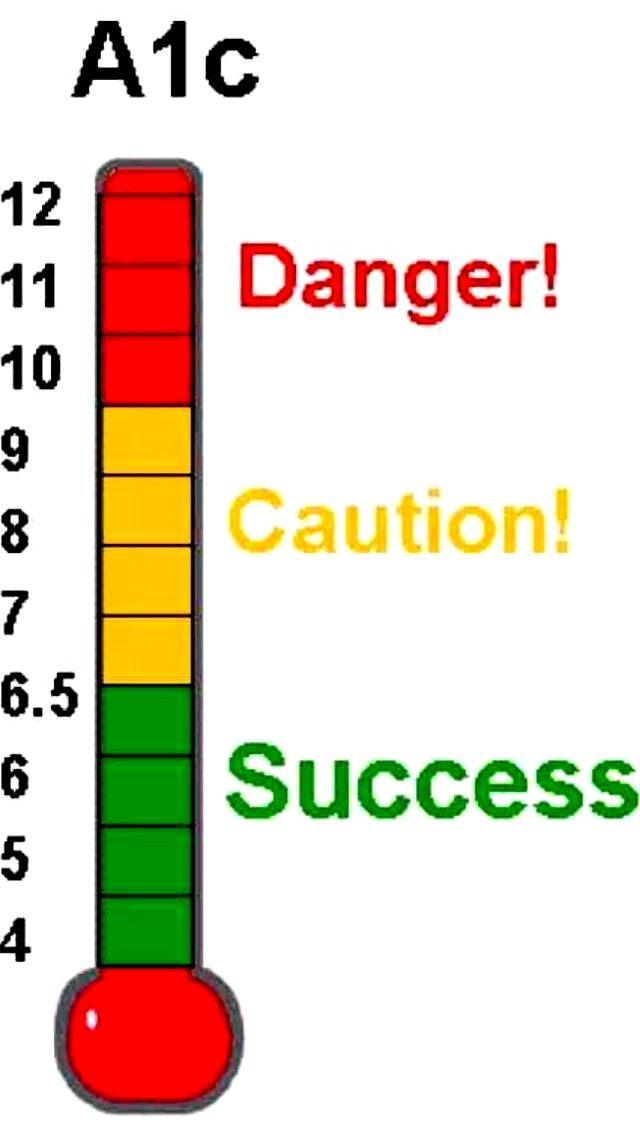The normal A1C range is a crucial indicator of blood sugar levels for individuals managing diabetes. It provides valuable insights into how well blood sugar is controlled over time, typically reflecting the average levels over the past two to three months. Understanding this metric is essential for anyone looking to maintain optimal health, especially for those diagnosed with diabetes or prediabetes.
In this article, we will delve deep into what the A1C test measures, the normal A1C range, and the implications of different A1C levels. We will also discuss how lifestyle changes can impact A1C levels and the importance of regular monitoring for effective diabetes management. Whether you are newly diagnosed or have been managing diabetes for years, this guide aims to provide you with the knowledge you need to make informed health decisions.
We'll explore the nuances of the A1C test, its significance in tracking diabetes, and how to interpret your results. With expert insights, practical tips, and trustworthy references, you will gain a thorough understanding of the normal A1C range and its impact on your health.
Table of Contents
- What is A1C?
- Normal A1C Range
- Significance of A1C Levels
- Implications of High A1C
- Implications of Low A1C
- How to Lower A1C Levels
- Monitoring A1C Levels
- Conclusion
What is A1C?
The A1C test, also known as hemoglobin A1C or glycated hemoglobin test, measures the percentage of glucose attached to hemoglobin in the blood. Hemoglobin is a protein in red blood cells that carries oxygen throughout the body. When blood sugar levels are consistently high, more glucose binds to hemoglobin, resulting in a higher A1C percentage.
Typically, the A1C test is performed in a clinical setting, and results can indicate an individual’s average blood sugar levels over the preceding two to three months. This test is essential for diagnosing and monitoring diabetes, as it provides a broader view of blood sugar control compared to daily glucose checks.
Normal A1C Range
The normal A1C range varies by individual and is influenced by several factors, including age, overall health, and diabetes status. However, general guidelines categorize the A1C levels as follows:
- Normal: A1C below 5.7%
- Prediabetes: A1C between 5.7% and 6.4%
- Diabetes: A1C of 6.5% or higher
For most adults with diabetes, the American Diabetes Association recommends a target A1C of less than 7%. However, individual targets should be discussed with a healthcare provider, as they may vary based on personal health conditions and lifestyle.
Factors Influencing A1C Levels
Several factors can influence A1C levels, including:
- Diet: High sugar and carbohydrate intake can raise A1C levels.
- Physical Activity: Regular exercise can help lower A1C levels.
- Medications: Certain medications can affect blood sugar control.
- Illness: Acute or chronic illnesses can temporarily affect A1C results.
Significance of A1C Levels
A1C levels are significant for several reasons:
- Indicates long-term glucose control.
- Helps in assessing the risk of diabetes-related complications.
- Guides treatment decisions and adjustments in management plans.
Implications of High A1C
High A1C levels can indicate poor blood sugar control, leading to various complications, including:
- Heart disease
- Kidney damage
- Nerve damage
- Eye complications
Individuals with consistently high A1C levels should consult their healthcare provider to adjust their diabetes management plan.
Implications of Low A1C
While lower A1C levels are generally desired for diabetes management, excessively low levels may indicate hypoglycemia, which can pose serious health risks. Symptoms of hypoglycemia include:
- Dizziness
- Sweating
- Confusion
- Loss of consciousness
It is essential to balance A1C levels to avoid both high and low extremes.
How to Lower A1C Levels
There are several strategies to help lower A1C levels effectively:
- Adopt a Healthy Diet: Focus on whole foods, such as fruits, vegetables, lean proteins, and whole grains.
- Increase Physical Activity: Aim for at least 150 minutes of moderate exercise each week.
- Monitor Blood Sugar: Regularly checking blood sugar levels can help identify patterns and inform treatment.
- Take Medications as Prescribed: Adhering to medication regimens is crucial for maintaining control.
Monitoring A1C Levels
Regular monitoring of A1C levels is essential for effective diabetes management. Most healthcare providers recommend testing A1C levels at least twice a year for individuals meeting treatment goals and quarterly for those not meeting goals or changing therapy.
Home testing kits are also available for individuals to monitor their blood sugar levels, but they do not replace the A1C test performed in a clinical setting.
Conclusion
Understanding the normal A1C range is vital for anyone managing diabetes. Regular monitoring and awareness of A1C levels can significantly impact overall health and the prevention of complications. By adopting healthy lifestyle changes and working closely with healthcare providers, individuals can achieve and maintain optimal A1C levels.
We encourage readers to leave comments and share their experiences or questions regarding A1C and diabetes management. Also, feel free to explore more articles on our site for additional health insights and tips.
Thank you for reading, and we hope to see you back soon for more informative content!
You Might Also Like
Aishah Sofey OnlyFans Leaks: Unveiling The Truth Behind The ControversyExploring The Intricacies Of XXMX: A Comprehensive Guide For Enthusiasts And Newcomers
Nikita Kahn And Larry Ellison: A Deep Dive Into Their Relationship And Life Together
Aitana Bonmati: The Rising Star And Her Journey In Football
Is Molly Noblitt In Jail For Killing Aubreigh Wyatt? The Shocking Truth Revealed
Article Recommendations
- Jason Momoa And Amber Heard Baby
- Laura Ingraham Husband
- Corey Harrison
- Mark Harmon Health
- Dr Yang Greys Anatomy
- Wanya Morris
- Sarah Jakes Roberts Age
- Jessica Alba Diddy
- Trump Stroke
- Seargeoh Stallone Movies


